Feldkirch, Vorarlberg
A lovely, well-kept mediaeval town in western Austria, incl. a cool castle, the Schattenburg, and several other wonderful sights
Dear readers,
a frantic, very labour-intensive week is behind me: one has to make hay when the sun shines. Just before a short shower of rainfall—the temperature still reads 27 degrees Celsius (at 61 degrees north, no less)—we brought in the last hay, and what better time to re-focus on: picture postcards.
Today, I wish to take you to the small Austrian federal state of Vorarlberg, specifically, to the city of Feldkirch. I’m assuming none of you have ever been (and if you do, please drop me a line in the comments below), hence a few introductory words are in order (via Wikipedia):
Feldkirch is a town in the western Austrian state of Vorarlberg, bordering on Switzerland and Liechtenstein. It is the administrative centre of the Feldkirch district. After Dornbirn, it is the second most populous town in Vorarlberg. The westernmost point in Austria lies in Feldkirch on the river Rhine, at the tripoint between Austria, Switzerland, and Liechtenstein.
Why would I take you there? Well, I’m working on the data spreadsheets that shall form the backbone of my future monograph based on the Erich Sonntag Postcard Collection, and I thought I’d iron out the details by compiling some quite uniform yet sufficiently variegated data (and since my wife’s family roots, in part, are in Voralrberg, well, there you go).
Feldkirch, a Mediaeval Town
This medieval town, which remains well preserved to this day, was mentioned as a city for the first time in 1218, after Count Hugo von Montfort built the “Schattenburg”, a castle which still is the major landmark of Feldkirch. Other sights in the town include the Gothic-style cathedral of St. Nikolaus. Feldkirch was the birthplace of Rheticus, and is currently the seat of the Roman Catholic Diocese of Feldkirch.
When I visited last almost a decade ago (we were still living in nearby Switzerland back then), of course we took the girls to the Schattenburg, seen here on a postcard from the late 1960s or early 1970s (it’s neither dated nor was it sent):
Speaking of the Middle Ages, of course I have more images of that castle, e.g., the one below, mailed in March 1969:
As we venture into town, we come across Market Street (Marktgasse), the main thoroughfare through the city centre—here seen on a postcard mailed in 1963:
Feldkirch’s Bildkanon
Much like many other places, certain perspectives remain identical across the 20th century, as documented by—picture postcards. Here’s a good “first impression” of Feldkirch on a postcard mailed in 1909:
Once we “zoom in” a bit to the left lower half/third of the postcard, we do get this view of St. Nikolaus (with the belfry on the left), the Katzenturm (Cats’ Tower, the round tower), and the Schattenburg in the background; below, seen on postcard from the 1920s (I think; it was mailed but I can’t date it):
As the below postcard mailed in 1977 shows, that perspective proved quite enduring:
For a long-form discussion of the pictorial canon (and many postcards from Český Krumlov, Czechia, please check out the posting linked below:
Now, I don’t know if you’d like to see “more” postcards from Feldkirch, but I think I’ll conclude today’s posting with the following image, if only because I really like it:
It’s a view of the Neustadt (New Town) with the town fountain; imagine you’re standing just below the Schattenburg (behind you) and enjoying that kind of view.
Today, it looks a tad less…prosaic, I’d argue (via Google Maps)
Then again, beauty is in the eye of the beholder, I suppose (but I really like that postcard more).





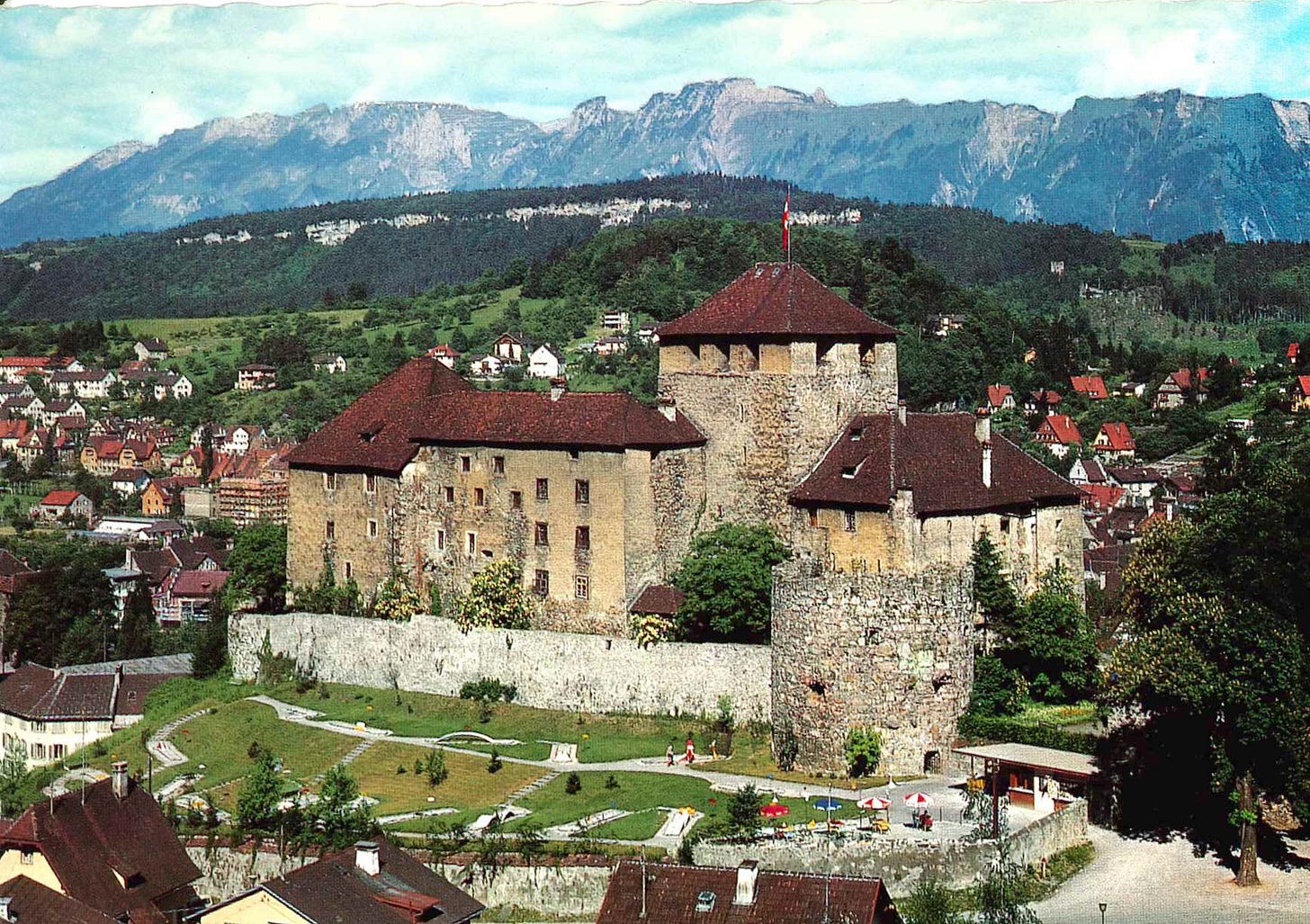
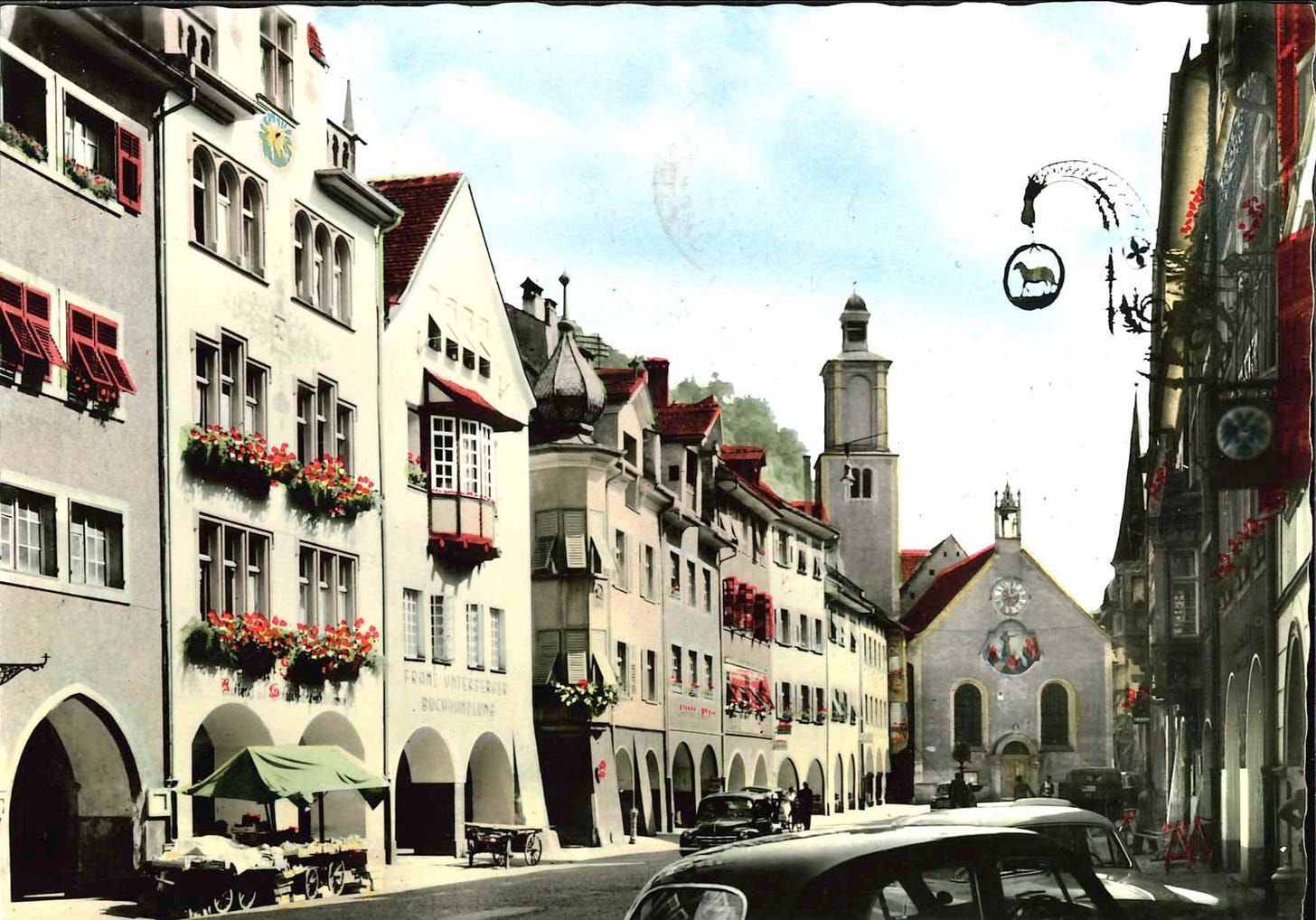
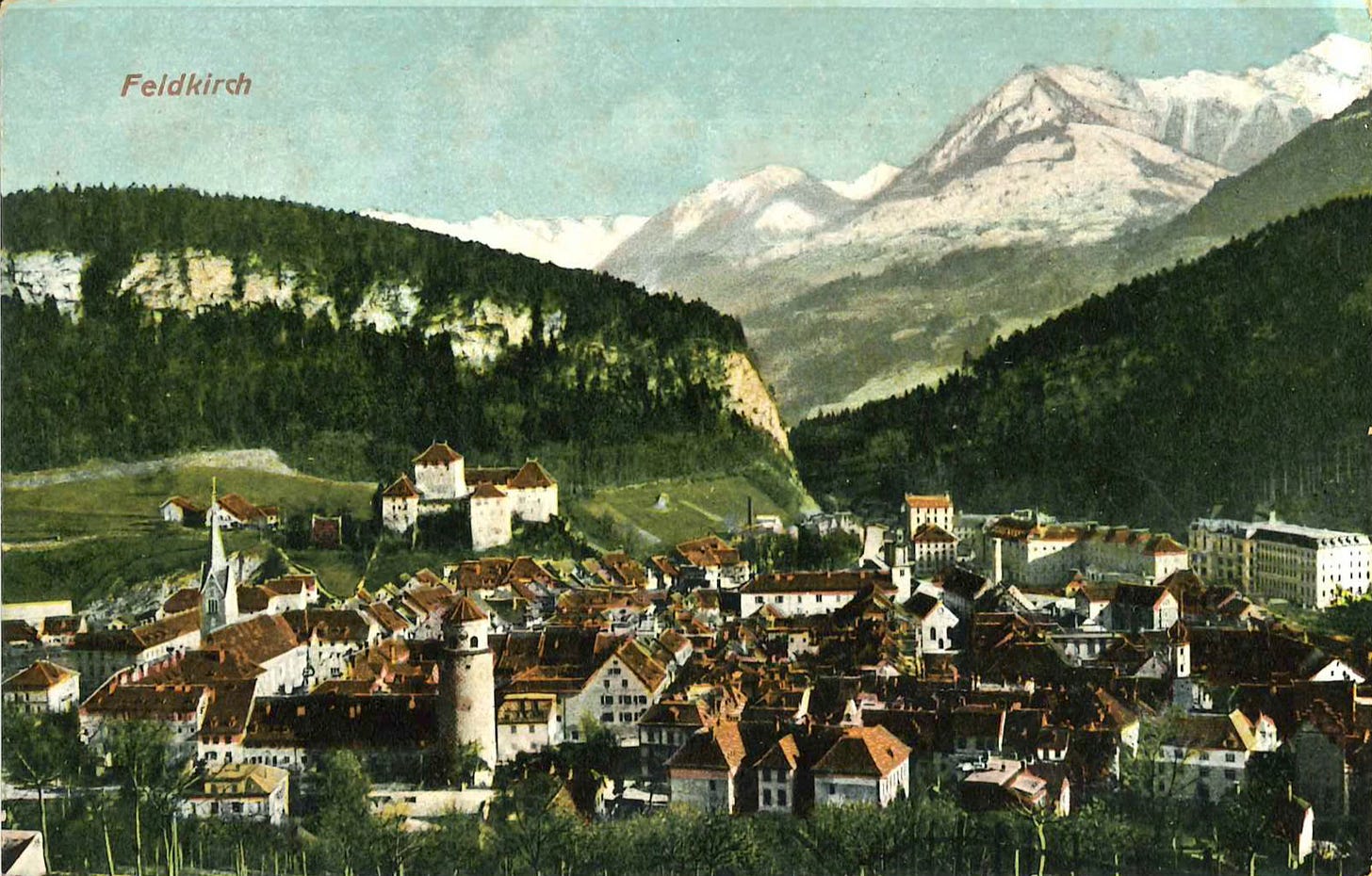
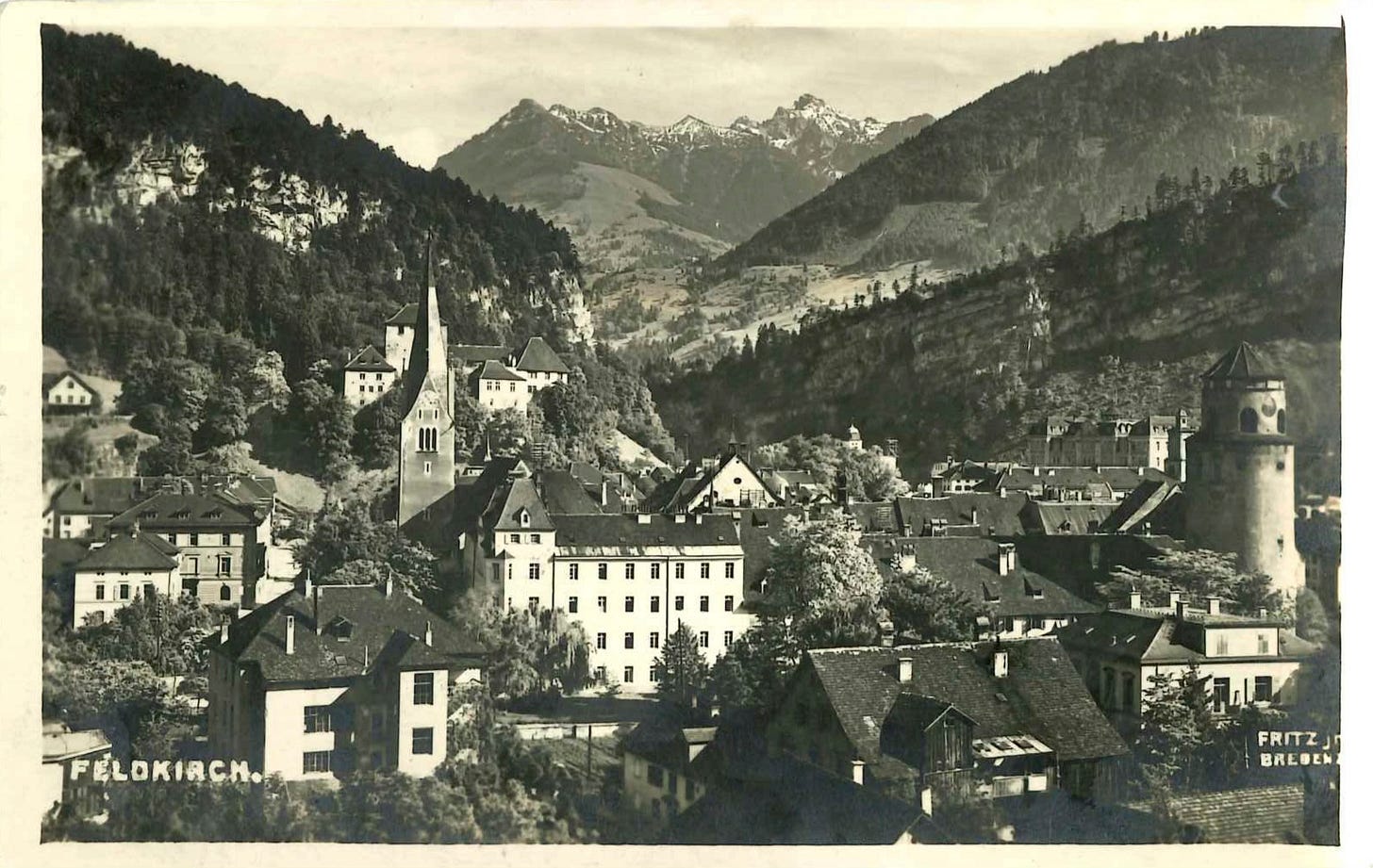
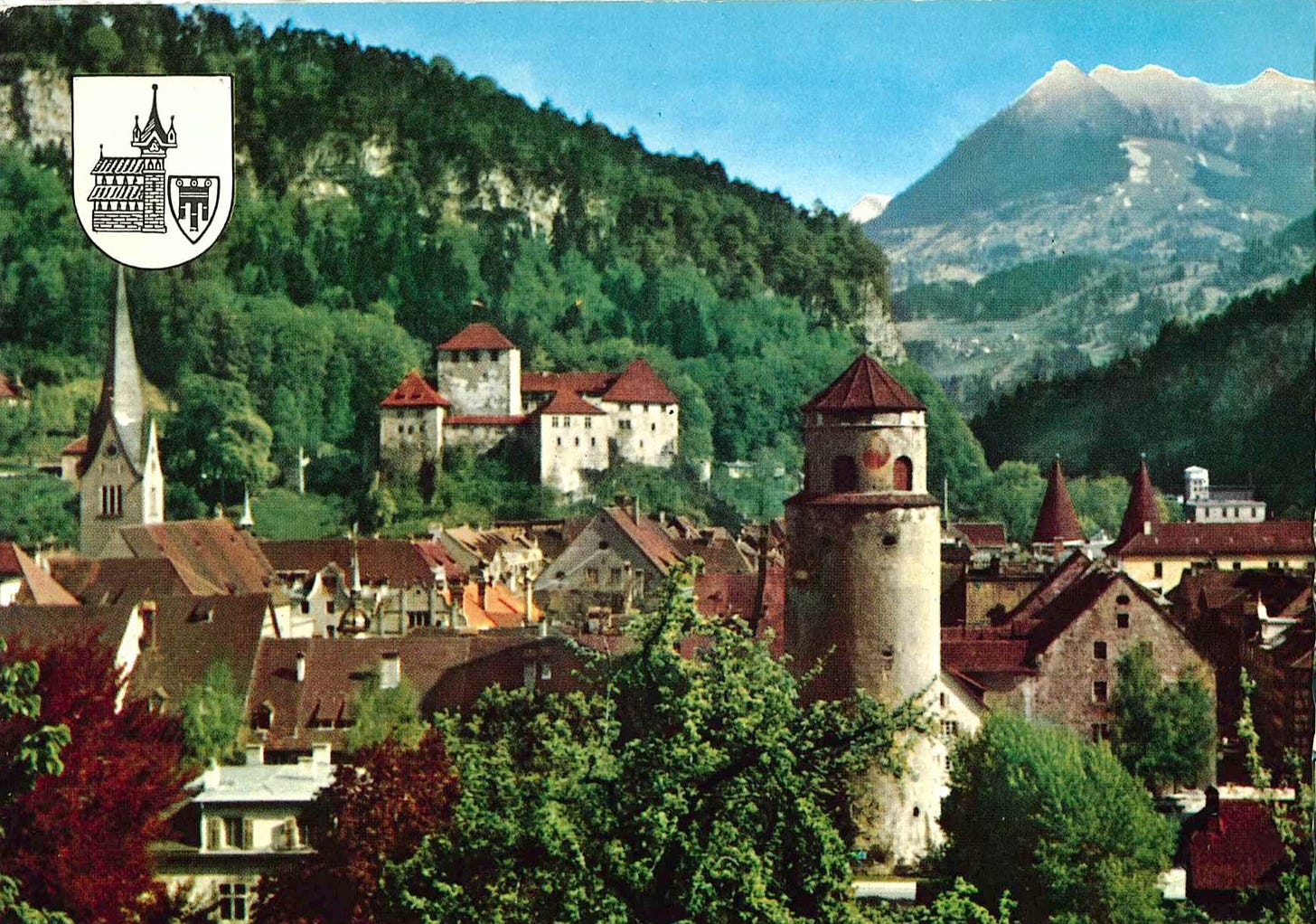



Ich habe 2 Jahre im Ländle gelebt und gearbeitet. Ein Jahr in Bregenz und ein Jahr in Dornbirn. Ich habe viel gesehen in Vorarlberg. Bi ghörig uf'm Weag gsi (bin gehörig auf dem Weg gewesen), wie man so schön auf Vorarlbergerisch sagt.
Interesting to see that, just like nearby Dornbirn, the market square used to be open to cars and is now a pedestrian zone. I live nearby and the town looks pretty similar nowadays, just a tad bigger with more apartment buildings and less houses.